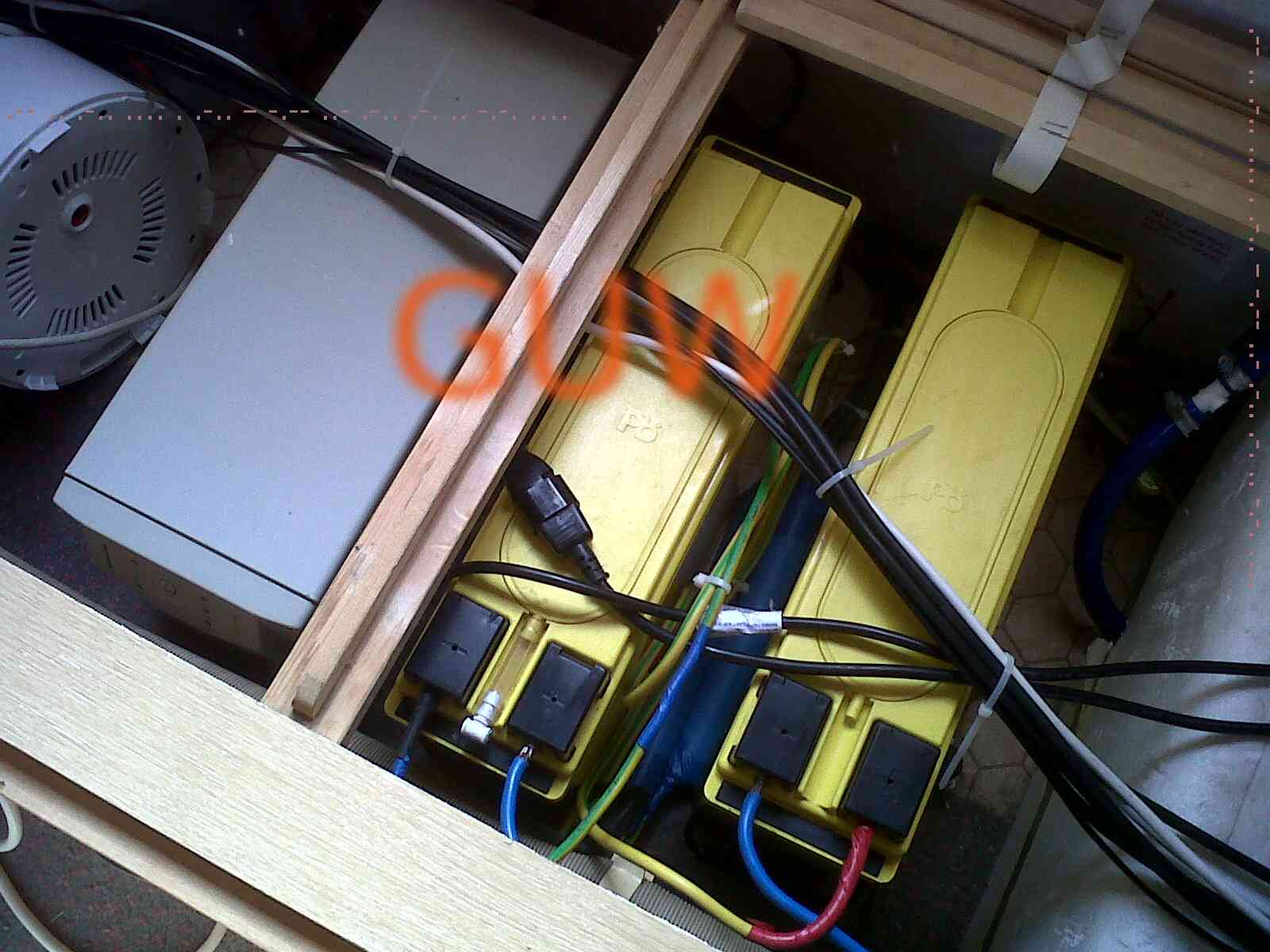©2014 FIRECRACKER™GUW ALL RIGHTS RESERVED

What is an inverter?
(Click to enlarge photo)
Once you have got your batteries and they're all charged up, you can use the DC (direct current) to power your lights and other electrical equipment. That's all fine except some appliances won't run on DC electricity and need mains power. That's where an inverter comes in, it turns low voltage DC into high voltage AC mains.
The photo shows an inverter (grey) and two 12V batteries (yellow) that I installed in my caravan to keep the television and satellite recorder going even if the mains cable was accidentally pulled out. As an aside and additional to my discussion on batteries in the previous section, this particular type are known as AGM (absorbent glass mat). They are lead/acid but, as the name suggests, the acid is absorbed in fine glass matting and won't leak out even if the battery is turned upside-down. They are expensive but I'll admit that I didn't buy them new. Another advantage is that, although they are vented to the atmosphere, they produce virtually no gases when charging, very reassuring as they are under my bed! The inverter is the type known as a UPS (uninteruptable power supply) which are widely used to keep a computer going if the mains fails. This particular one is 24V DC so the two batteries are connected in series to give the correct voltage. When the mains is connected the batteries are kept charged and then, if it fails, the equipment keeps running until the batteries are exhausted (not recommended to let the situation get that far). This particular set-up will keep the TV and satellite receiver going for about a day.
As with most things inverters are available in many shapes and sizes. Personally I don't buy inverters that are claimed to be for leisure use or anything to do with green-energy. In my experience they are too expensive and unreliable, where repair is almost never an option. Similarly, in my opinion, anything that says "square-wave" or "modified sine-wave" is just a toy and not worth a second look. I could go into technical details but I'll spare you and leave it at that. My reasons for the choice of ex-computer UPSs is that there are millions of them around so they are cheap and, they are generally built to a very high standard. If you select the XL type (heavy duty) they are rated for continuous use without overheating. Additionally, if you want to be a bit clever, they are software controlled and you can tell them how many batteries you are going to connect to them to optimise charging.
Not long ago I even had a 48V inverter and four of the yellow batteries in the back of my car for around six months. I was staying at a remote site so I charged the batteries by running a cable into the car during the day and then had enough power to run a microwave, electric blanket, TV and computer etc at night. The point I am making is that if an inverter can survive and work well for that application it should have no difficulty on a shelf in a shed as part of a free energy system.
©2014 FIRECRACKER™GUW ALL RIGHTS RESERVED
